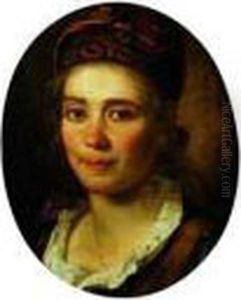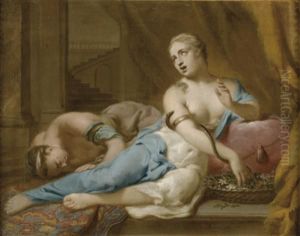Jean-Pierre Ii Rivalz Paintings
Jean-Pierre Rivalz, also known as Jean-Pierre II Rivalz to distinguish him from his father, the painter Jean-Pierre I Rivalz, was a French artist born in Toulouse, France, in 1667. He was a painter, architect, and engraver, whose work primarily reflected the Baroque style that was prevalent during his time. Rivalz's contributions to art were particularly influential in the region of Toulouse, where he spent much of his career. He was also known as Rivalz the Younger or Rivalz fils to denote his position as the son of an established artist.
Rivalz's education in art began under the guidance of his father, who was a painter and the master of the local painters' guild. This early training provided him with a solid foundation in the technical aspects of painting. In addition to his father's instruction, Rivalz most likely received influence from other local artists and may have traveled to Italy, as was customary for many artists of his era, to further his studies, though there is no definitive record of such a journey.
Throughout his career, Jean-Pierre II Rivalz produced a number of religious works, including altarpieces and frescoes for churches, which were common commissions for artists of his time. His style was characterized by dynamic compositions, a strong sense of movement, and a vivid use of color, which were all hallmarks of the Baroque aesthetic. Rivalz's paintings often depicted dramatic biblical and mythological scenes, designed to evoke emotional responses from viewers.
In addition to his work as a painter, Rivalz was also an accomplished architect and engraver. He played a significant role in the architectural developments in Toulouse and was involved in the design of several buildings. His engravings, meanwhile, served as a means of reproducing and disseminating his and other artists' designs, which was an important aspect of artistic practice during the period.
Jean-Pierre II Rivalz passed away in 1735 in Toulouse. While he may not be as widely known as some of his contemporaries, Rivalz's work remains an important part of the cultural heritage of Toulouse and is representative of the Baroque tradition in the south of France. His legacy continues to be celebrated in the region, and his works can be found in local museums and churches.

